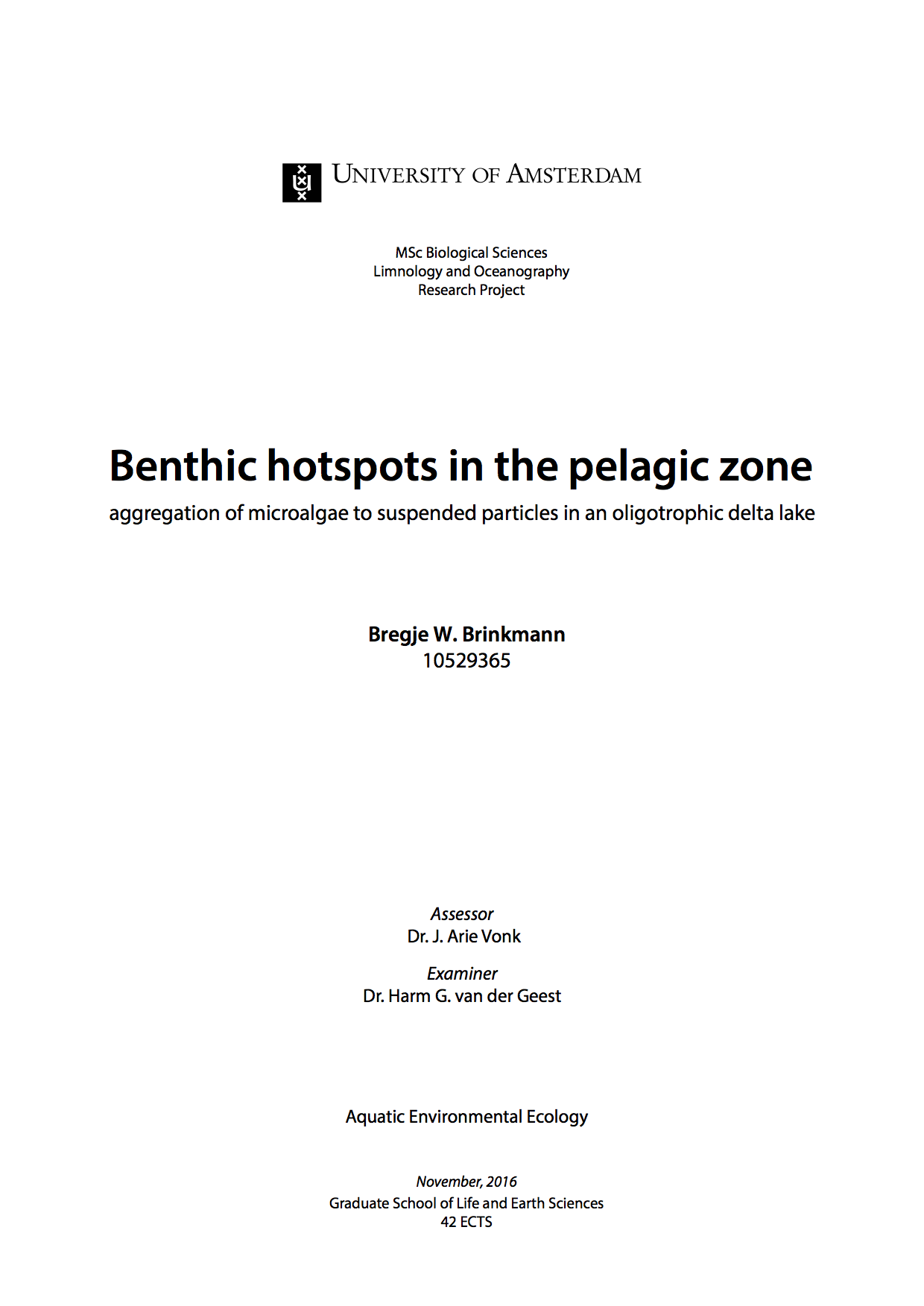
November 2016, Amsterdam
AbstractMicroalgae occurring in turbid waters of oligotrophic delta lakes face sharp opposing gradients in essential resources. High concentrations of suspended particles quickly attenuate incident light, restricting the euphotic zone to the top surface layer of the water column. In contrast, dissolved nutrients are only available near the lakebed due to mineralization processes localized in the sediment. This suggests that neither the pelagic nor the benthic zone provides the combination of resources that is required for algal growth. The present research project aims to explore if aggregation enables microalgae to thrive under these conditions. Specifically, it was hypothesized that nutrient limitation increases the production of exopolysaccharides by algae when light availability is sufficient, stimulating aggregate formation. Bacterial hydrolytic enzymes excreted in aggregates were hypothesized to provide dissolved nutrients to aggregated microalgae in the euphotic zone, promoting algal growth. To test this, both a monoalgal culture of the benthic diatom Staurosira sp. and field aggregates from the turbid and phosphate-limited delta lake Markermeer (the Netherlands) were exposed in the laboratory to the full factorial setup of phosphate-replete and phosphate-deplete conditions, with high light and low light availability. Upon two weeks of incubation, mean exopolysaccharide quantity of Staurosira sp. was higher in phosphate-deplete conditions compared to phosphate-replete conditions, without a change in zeta potential and algal stickiness, in both high light and low light conditions. Image tracking demonstrated that the settling velocity of Staurosira sp. with sediment was higher in phosphate-deplete conditions than in phosphate-replete conditions. This suggests that increased microalgal exopolysaccharide production under phosphate-deplete conditions enhanced aggregate formation. Confocal laser scanning microscopy revealed that field aggregates comprise algae, bacteria, exopolysaccharides and alkaline phosphatase activity. Colorimetric quantification of the latter indicated that aggregates are hotspots of alkaline phosphatase activity, comprising higher activity than surrounding water. The spatial distribution of this activity in aggregates largely matched that of bacteria, supporting its bacterial origin. Over two days of incubation in phosphate-deplete conditions, soluble phosphorus concentrations in aggregates and surrounding water remained below the detection limit, implying that orthophosphate released by phosphatases was directly re-incorporated into the particulate fraction. These results demonstrate that studying aggregate microbial ecology in relation to microalgal productivity could help to increase understanding of nutrient fluxes through turbid and oligotrophic delta lakes.
Key words: aggregation; alkaline phosphatase activity; confocal microscopy; exopolysaccharides; hotspots; microalgae; nutrient limitation; stickiness; zeta potential